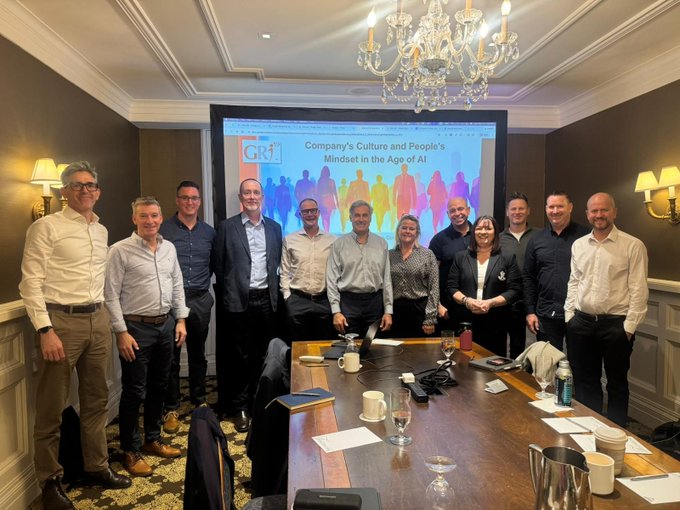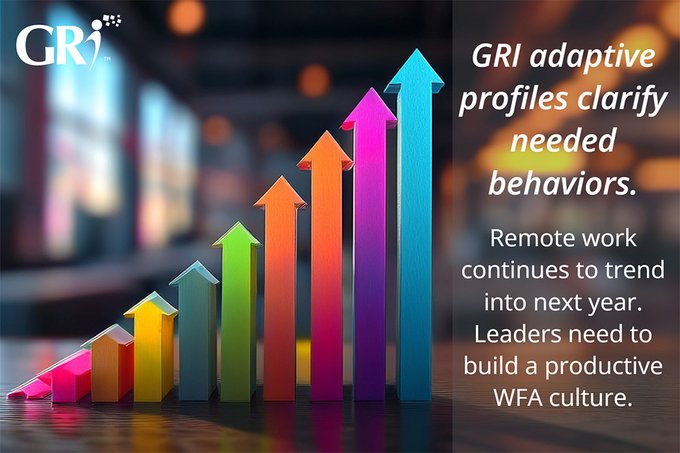Leaders: A New Approach for a New Era
Posted by Frederic Lucas-Conwell

Leaders: A New Approach for a New Era
When recently flying between the East and West coast, I was surprised to be greeted by the pilot. Pilots are usually busy with their checklists before the plane takes off. This time not only did the pilot wait for passengers with the flight attendant, but he also walked later beyond first class to the back of the plane and chatted with passengers in a cordial and engaging way. In my 35+ years of flying long distances that was a first.
This atypical situation highlights the skills most in demand for people leaders: mastering a broad range of behaviors depending on the situation and making certain that teams convincingly engage in those behaviors. Some of these behaviors come naturally, and people are comfortable with them. Others are developed by adapting to the needs of the environment—they are the most difficult and take years to learn.
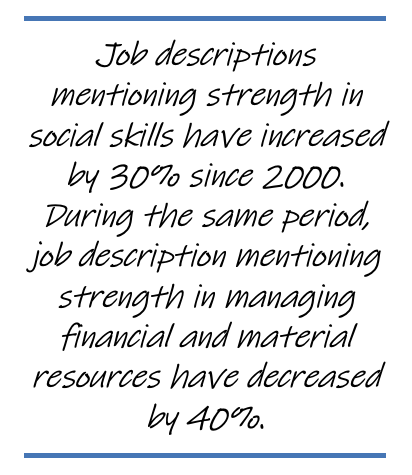
Taking a commercial plane with hundreds of passengers safely up in the air requires three to four years of training at a minimum and 1,500 hours of airtime practicing these skills. Developing effective social skills as a leader also takes years of training and experience. This development progresses on a bumpy road, and these kinds of skills are typically learned at high expense. They may indeed be the most challenging to master, and the most complex to develop.
A recent article in the Harvard Business Review, “The C-Suite Skills that Matter Most,” highlights that social skills are now considered to be at least as important as competence in finance, marketing, and technology.
Job descriptions that mention social skills have increased by 30% since 2000. During the same period, job descriptions that mention financial expertise and other technical competencies have decreased by 40%.
In another study from Gartner, “Top 5 Priorities for HR Leaders in 2023”, leader and manager effectiveness are the top priority for 60% of respondents.
The challenge of developing social skills at a leadership level is universal and takes time, whether you are in command of a plane or a company, working through checklists or in interpersonal interaction.
The Impact of Social Skills on Performance
Leaders’ interpersonal and social skills have a significant impact on organizational performance.
The marketing research firm Gallup recently calculated that: “70% of the variance in team engagement is determined solely by the manager.” The research doesn’t tell if it applies to managers or to the C-suite of Global 500. From our observations at GRI working with such companies, it surely does. Even if it were only 20%, this finding should prompt more consideration for leadership development.
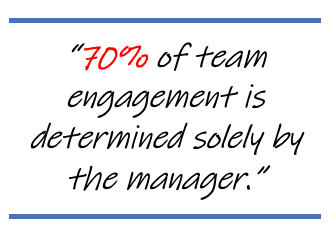
When our flight crew is engaged because of what the captain does and doesn’t do, there is also much to know about the satisfaction of the flight attendants, the quality of their service, or what happens in the cockpit with their co-pilots to get the plane off the ground.
“Soft” measures of engagement hide “hard” ones related to productivity and retention, and other measures such as revenues and costs; thus, the importance of a leader’s social skills for the engagement of team members, and effective delivery of results.
Because a leader’s and manager’s job put them in charge, they play a central role in how quality relationships develop within the team. Those relationships impact the solidarity, mutual respect, and support given to each other, which in turn are critical to perform as a team.
A leader’s social skills come into play as early as recruitment, when attracting, interviewing, and selecting those who will hopefully soon become effectively engaged crew members.
The Shortcomings of Improvement Programs
There are countless programs to help leaders accelerate the development of their social skills. Thanks to the Internet new tools quickly emerged. Progress in adult learning theories, microlearning, and online coaching have also helped new programs take off.
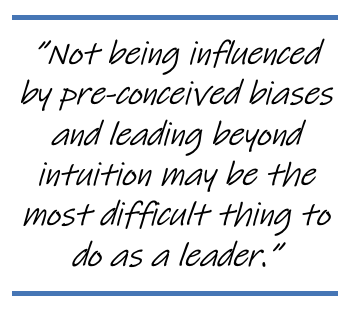
Some include personality trait approaches to help leaders understand themselves and others, including leadership styles and emotional intelligence traits (1). But these approaches are difficult for real-world managers to use because personality traits are abstractions that do not take the environment into account, cannot predict behaviors, and do not identify the efforts and support needed to adapt.
Other programs, including 360-degree approaches, inform leaders of the impressions others have of them. These approaches are, however, biased by others’ perceptions and do not evaluate the individual’s way of being and progressing.
Still other one-on-one programs too often look like therapy, as in reality, the challenge faced by managers is to continue developing their skills, understand more objectively their differences with peers, and be positive about them. Unrealistic expectations ultimately drive people away from their strengths, resulting in disengagement and underperformance. Talent grows on different pathways which can be hard to identify.
A shortcoming at the core of most models is their inability to account for human subjectivity in the perception of people. It’s challenging to change our understanding of people—what some scientists call “implicit theories”. We naturally have strong beliefs about who people are. Not being influenced by pre-conceived biases and leading beyond intuition may be the most difficult thing to do as a leader.
As DH Lawrence put it "What the eye doesn't see and the mind doesn't know, doesn't exist." Once our differences can be seen and known, they start to exist. As we experience at GRI, it requires a more thorough process to identify and learn about those differences for individual and collective growth.
Learning leadership and social skills always happens through someone the manager or leader can trust and learn from. Many times, mentors or coaches take this role, but they only have the perception of the mentee or coachee. The same subjective limitations apply to everyone in the team and the organization.
By using more effective tools and methods, limiting the effect of pre-conceived biases and developing effective social skills can be accelerated. Leaders can learn and receive guidance from their mentors to improve their social skills and become more effective in their leadership.
The Behavior-Factor-Based Approach
Behavior factors emerged from academia in the 1990s and now provide clear descriptions of how people behave. They can be defined, observed, and measured, so social skills can be applied to tangible, recognizable situations. Factors also indicate one’s most efficient way to interact, which is critical for leaders to build communication and trust with their team.
Assessment of personality traits is very popular in the training and coaching worlds. Traits are relatively easy to assess and can be identified by any number of descriptors. Unfortunately, they lack precision, are malleable, and as such, can lead to action plans that are mistargeted and difficult for the leader to implement. Factors, on the other hand, describe behaviors and tell us about the expression of any trait. They identify people’s intrinsic motivations, how they are driven to express their potential, adapt to the environment, and show interest in it.
Diversity, Equity and Inclusion (DEI) initiatives have been developed to help people be more sensitive to the inherent biases we all have. Those approaches, however, do not help us understand and motivate people.
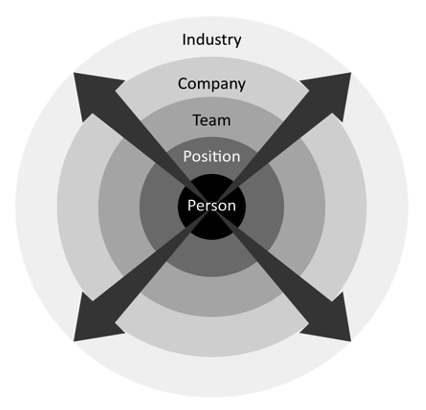
A behavior-factor approach can.
As the picture on the right illustrates, a behavior-factor-based approach applies both to understanding people and to demands from the job, team, company, and industry. It provides important clues about how an organization can manage creativity, cope with changes, how/who it needs to recruit, and how relationships can be improved.
Developing Social Skills at the C-Level
The example below is from a company—that we will call Starlight—where the behavior-factor-based approach was deployed from the executive level down to all employees (2).
At Starlight, the challenge was to improve the recruitment and engagement level of employees: attracting, upskilling, and retaining talent more effectively. They used conventional methods with personality traits and 360-degree assessments, but the issues of employee retention and engagement kept coming back.
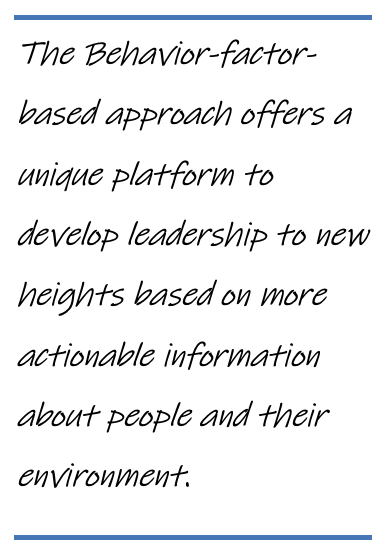
With the behavior-factor-based approach employees became keenly aware of their differences and adaptations to each other. A better understanding of the adjustments needed for their jobs dramatically impacted their development plan. With candidates, it clarified and improved the interviewing, selection, and onboarding processes.
How is Starlight's leadership involved in these initiatives? Recruitment and management informed by the behavior-factor-based approach led them to setting more realistic expectations for employees. Recruiters were informed about a candidate’s best way to perform so they could tailor their interviews.
Mindfulness, resilience, and compassion can be vain concepts until management is attuned to each team member: a prerequisite today for building effective performance. This could happen with executives and managers fully trained and versed in their role at understanding and managing people.
The results at Starlight after six months of using GRI’s factor-based approach:
- More effective interviews as measured with interviewing-time and number of quality-candidates attracted.
- Higher engagement levels as assessed by engagement surveys at various points in time.
- Better employee retention, with a sharp inflection when the program started.
It would be tempting to say that assigning roles based on character or a new intervention would be a perfect gig for a consultant or HR team.
Except that, with people and their organization, including for an airplane crew, many variables are at play, and the analysis and the execution are simultaneously carried out by those in charge.
The thinking of and delivery on people are intertwined. Managerial attitudes, communication, and competencies cannot be faked.
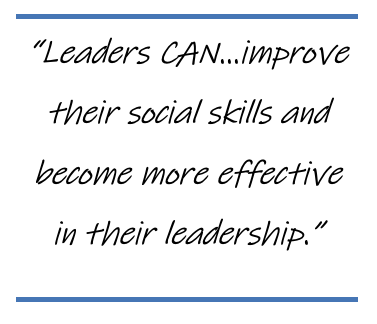
Successful leaders adapt their behaviors to specific situations and individuals, make decisions accordingly and support their teams.
While consultants and HR teams participate in the learning and deployment of social skills, leaders set the tone and the culture in their organizations. This is a continuum of learning for leaders.
The behavior-factor-based approach offers a unique platform to more quickly develop leadership to new heights with more accurate, actionable information about people and their environment.
The article was written by Frederic Lucas-Conwell, PhD, GRI’s Co-founder & CEO, with the input, participation, and editorial work from GRI consultants, advisors and clients.
Notes
-1- Emotional intelligence, people skills or human skills: although these concepts can be defined and used differently, they refer to a same core set of skills that we refer to in this article as “social skills.”
-2- This is a real case but names have been changed.
References
Raffaella Sadum, Joseph Fuller, Stephen Hansen, PJ Neal. The C-Suite Skills that Matter Most. More than Ever, Companies Need Leaders who are Good with People. July-August 2022. Harvard Business Review.
Top 5 priorities for HR Leaders in 2023: Actionable and objective advice to tackle top HR challenges. n=800 HR leaders in 60 countries and all major industries. October 2022, Gartner 2023 HR Priorities Survey.
Jim Clifton, Jim Harter. It’s the Manager: Gallup Finds that the Quality of Managers and Team Leaders is the Single Biggest Factor in Your Organization’s Long-Term Success. 2019, Gallup Press, New York, NY.
Please contact us for more information about GRI’s leadership system and how to develop leaders more effectively.
GRI—Growth Resources Institute—provides leaders with the skills for growing resilient organizations based on unbiased information about people. With clients worldwide, GRI’s methods, tools, and platform deploy in companies thanks to a transformational experience delivered to executives and HR leaders. GRI’s system is implemented through a global network of consultants and affiliates.
Latest Articles
Groupama Successful Transformation in Romania: The GRI, Catalyst for Profound Change
The history of Groupama in Romania is an eloquent testament to resilience, strategic vision, and the transformative impact of innovative management tools. Arriving at the...
Hybrid Work: A Management Revolution
The COVID-19 pandemic has acted as an unprecedented catalyst, radically transforming our approach to work. What was once a marginal practice has become the norm for many...
Leadership 3.0: Objective Insights for People-Centric Leaders
Steve, a brilliant entrepreneur, poured his heart into his work. His team at "Innovatech" was on the brink of a major breakthrough, a new app that promised to revolutionize...


